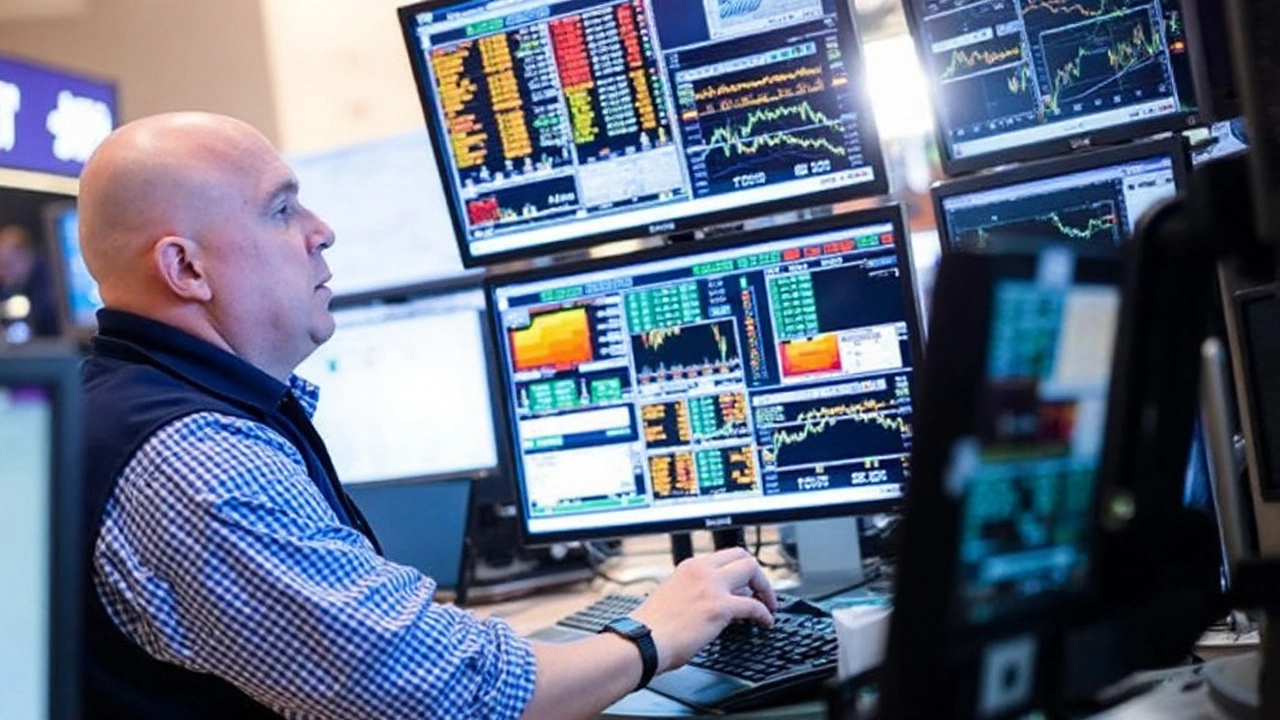Tech stocks jostle for position as the Fed looms
One headline-grabbing contract was not enough to lift Nvidia today. Shares traded at 177.20, down 0.35%, even as the AI leader stayed at the center of market conversation. The session had that pre-Fed feel: major indexes leaned higher, rate-sensitive tech took the spotlight, and traders debated whether the next policy signal would extend the rally or cool it.
The tone was cautious but constructive. Short interest across S&P 500 tech names fell in August, pointing to less outright bearish positioning. That matters when a sector is this crowded. Lower short interest can reduce the fuel for sharp squeezes, but it also hints that investors are less inclined to bet against the winners heading into a high-stakes central bank week.
The day’s movers clustered around three themes: AI infrastructure, semiconductors, and anything tied to future platforms like autonomous driving and space. On the other side of the tape, lingering questions about regulatory risks in China, supply constraints in chips, and capital intensity for data centers kept a lid on some gains.

Company snapshots: what moved and why
Nvidia: The stock slipped 0.35% to 177.20 after a week of mixed signals. In China, an antitrust setback injected fresh uncertainty into overseas operations, a reminder that Nvidia’s geographic exposure is now a real risk factor. At the same time, the company stayed busy on the commercial front. AI cloud firm CoreWeave secured a headline 63 billion dollar order tied to Nvidia’s platform, underscoring the scale of compute demand building around training and inference. Another data point that can sway sentiment: a director sold about 88.56 million dollars of stock, per SEC filings. Insider selling does not always predict fundamentals, but near record highs it can add to profit-taking pressure.
Tesla: Shares gained with the broader market as investors rotated back into growth ahead of the Fed decision. The setup favored higher-beta names: Treasury yields eased intraday, and traders leaned into risk while waiting on policy guidance. For Tesla, the story remains a tug-of-war between margin math in a price-competitive EV market and the optionality around software, charging, and autonomy. When macro tailwinds show up, the stock tends to respond quickly.
Oracle: The enterprise software giant stayed on watch lists even without a clear price print. Attention is fixed on its cloud infrastructure and database momentum as customers shift AI workloads onto platforms with tight data, security, and latency needs. Investors want to see sustained growth in cloud bookings and a path to margin leverage as scale kicks in. Every hint that Oracle is capturing AI-adjacent demand nudges the narrative in its favor.
Texas Instruments: It was another choppy session for the analog chip bellwether. The stock moved alongside a volatile semiconductor tape as investors parsed uneven demand across autos, industrials, and consumer end markets. TI’s long cycle, broad product catalog, and ongoing fab investments make it a good read on the real economy. When buyers signal that inventories are normalizing, this name usually benefits. Until then, day-to-day moves will track macro data and sector sentiment.
CoreWeave: Fresh off that 63 billion dollar order linked to Nvidia’s ecosystem, the AI cloud specialist drew strong interest. Deutsche Bank stamped a Buy rating and flagged room for upward revenue revisions. The market is laser-focused on GPU access, power availability, and data center buildouts. In today’s AI gold rush, the shovels are accelerators, and providers who can stand up capacity fastest are being rewarded in expectations.
Gemini Space Station: Details were thin, but the name still landed among notable movers. Space remains a high-beta corner of the market where headlines on launches, payload contracts, or financing can swing sentiment fast. Investors chasing the broader space economy theme are balancing long build cycles and capital needs against the potential for new markets in communications, Earth observation, and in-orbit services.
Behind all of this: the Federal Reserve. Traders are bracing for a policy decision and a fresh read on the growth and inflation mix. The key questions are simple. Will the Fed stick with a restrictive stance to ensure inflation cooldowns stick, or signal comfort with easing down the road? The answer feeds directly into discount rates for long-duration assets like high-growth tech. Even small changes in rate expectations can swing valuation math in a hurry.
Views inside the market are split. Some see echoes of past periods when optimism outran reality, name-checking the late 1990s and bursts of 2020-2021. Others argue the earnings power behind AI is still underestimated. What has changed since last year: the supply chain for advanced chips is tighter, data center power is now a gating factor, and hyperscalers are shifting spend from general compute to accelerators at speed.
For semiconductors, the moving pieces are piling up. Lead times for advanced GPUs, capacity ramps at foundries, and export rules around high-end chips all feed into demand visibility. Texas Instruments gives a read on broad industrial health, while Nvidia is the lens for AI-specific scarcity. When one moves, the rest of the sector tends to reprice around it.
Cloud and enterprise software are riding the same wave from a different angle. If companies are ready to put AI pilots into production, they need compute, storage, networking, and a data architecture that keeps latency down and privacy intact. That is where Oracle and other infrastructure providers are trying to win share, pitching predictability and integration over pure speed.
The space theme is a reminder that risk appetite reaches beyond software and chips when markets turn risk-on. Names like Gemini Space Station are volatile because revenues are often further out, but the addressable markets can be big if execution lands. In practice, these stocks can amplify whatever the broader market is doing on a given day.
Short interest tells its own story. The August drop in bearish bets across S&P 500 tech names suggests traders have trimmed downside hedges. That can support prices into events, but it also means shocks can hit harder if the Fed surprises or if company news underwhelms. In other words, the floor might feel firm until it is not.
What to watch next: the Fed statement, the rate path implied by the dot plot, and any clues on balance sheet runoff. For Nvidia, updates on China exposure and supply timing will matter. For Tesla, signals on pricing discipline and software monetization are key. For Oracle, the focus is on cloud bookings and AI-related workloads. For Texas Instruments, channel checks and commentary on autos and industrials can move the needle. For CoreWeave, capacity expansions and power procurement are the big swing factors. For the space names, contract wins and funding conditions will dictate momentum.
Today’s tape said this much: AI and its supply chain still anchor the market’s imagination, but policy and execution will decide who keeps leading once the Fed has its say.

